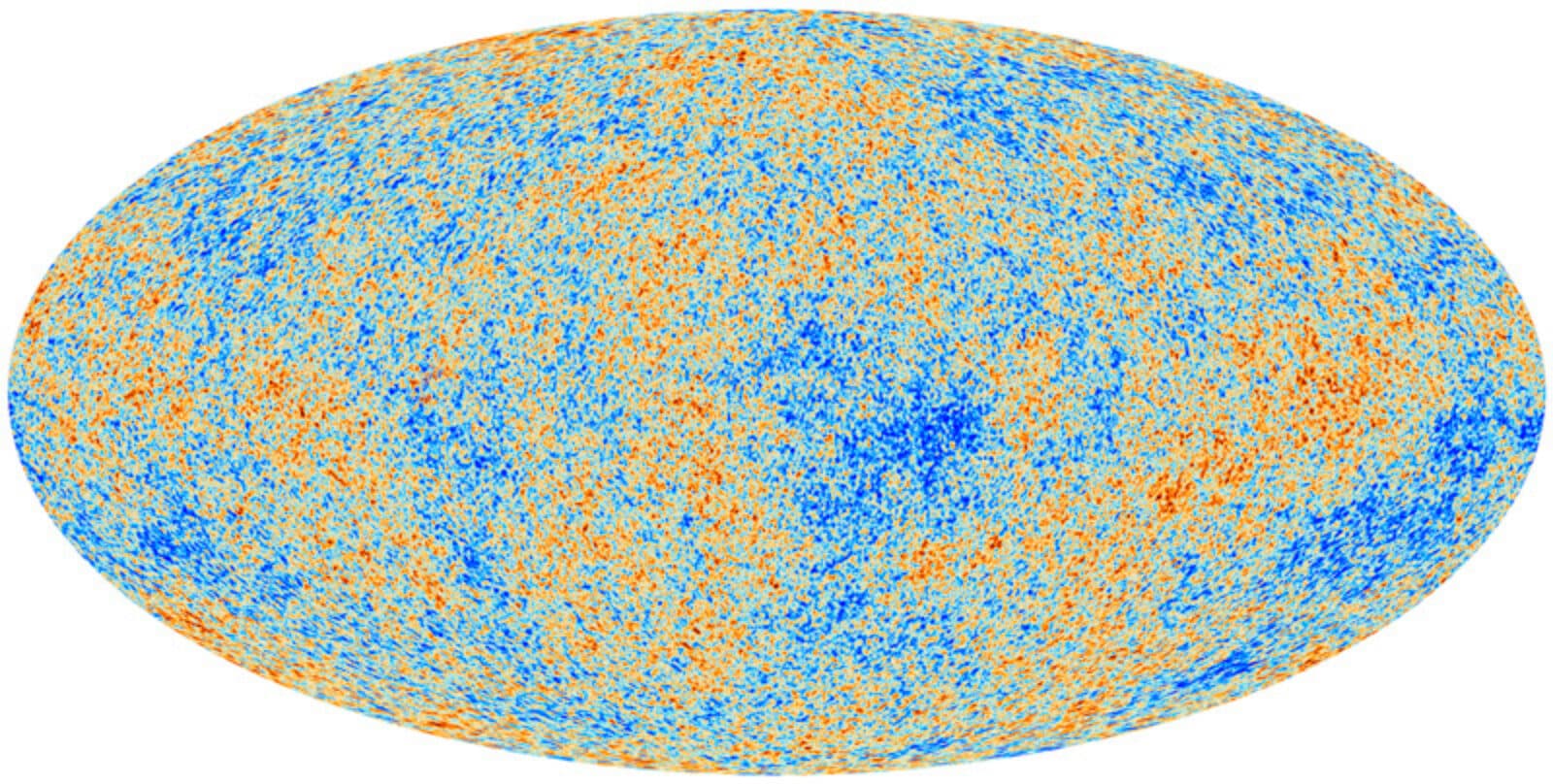The Inflating Universe (Sidebar)
What is the theory of inflation?

One of the major tenants of the Big Bang model of how the universe began is an idea called inflation. It proposes that 10-36 seconds after the Big Bang, the universe expanded exponentially very quickly – from something that was billions of times smaller than a proton to something that was about the size of a fist. Inflation ended at 10-32 seconds after the Big Bang, but that rapid expansion was enough to launch the universe that we recognize today.
According to our understanding of physics at the very smallest scales, fluctuations in temperature should have existed in the universe at the very beginning. Inflation amplified these fluctuations, which came to represent fluctuations in density in the expanding universe. Areas of lower temperature corresponded to regions of higher density, and this is where galaxies and galaxy clusters eventually formed. Areas of higher temperature, corresponding to regions of lower density, is where great voids exist in the universe today.

While amplifying the fluctuations of the early universe, inflation theory states that the rapid early expansion should have distributed those fluctuations uniformly throughout the expanding universe. Astronomers refer to this uniform distribution as “isotropy,” and they expect the universe to appear isotropic in all directions on the largest scales.
The cosmic microwave background, which is the relic radiation of the Big Bang that became visible 380,000 years after the Big Bang, should show fluctuations at very small scales, according to inflation theory. The Planck spacecraft has mapped these fluctuations in extraordinary detail, confirming a major aspect of inflation theory.
But Planck confirmed some strange findings that previous experiments had hinted at – and they run contrary to other aspects of the universe that inflation theory predicts. The mission’s research team found certain large-scale features on the CMB sky, which they call “anomalies,” that our understanding of inflation cannot explain. One of them, for example, is a large cold spot, which corresponds to an anomalously large area of high density.
Either inflation theory is wrong, or it needs to be modified in some way to account for these departures from uniformity at the largest scales. One of the major tenants of our prevailing model for how the universe began may need to be re-thought.